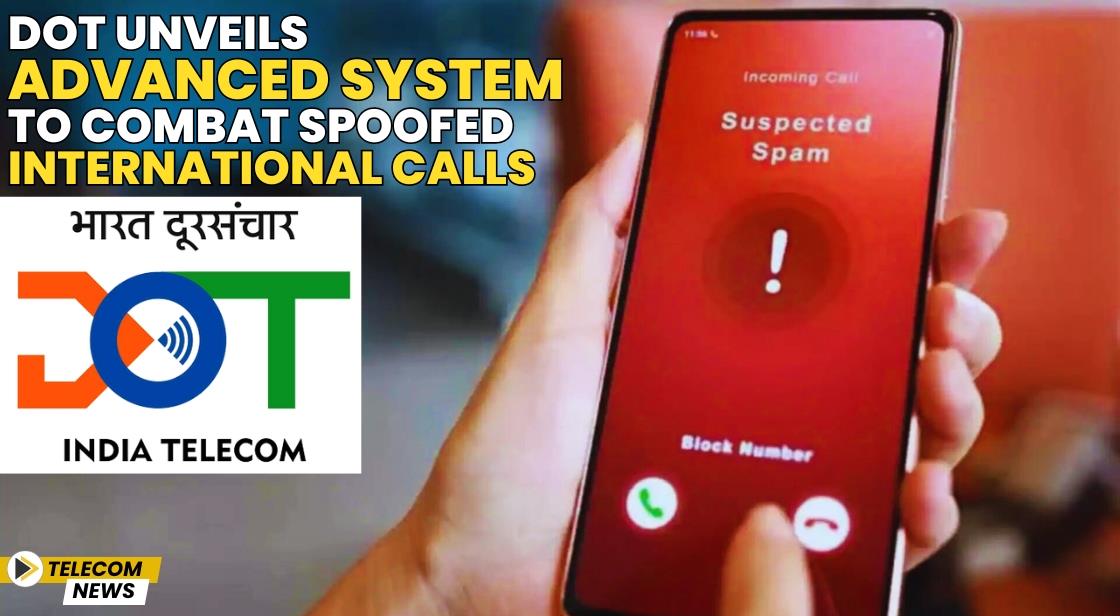DoT Unveils Advanced System to Combat Spoofed International Calls

News Synopsis
The Department of Telecommunications (DoT) is preparing to implement the second phase of a centralized system designed to effectively block fraudulent international spoofed calls. Spoofed calls refer to deceitful international communications that masquerade as being from legitimate Indian mobile numbers, posing a serious threat to users.
Understanding Spoofed Calls and Their Threats
According to the DoT, this initiative aims to address the alarming rise in incidents involving fake threats related to mobile disconnections, arrests, and impersonations of government officials. Such fraudulent activities not only mislead consumers but also undermine trust in telecommunications.
Implementation Phases of the System
The rollout of this anti-spoofing initiative is structured in two distinct phases. The first phase, which has already been successfully executed by all four major telecom service providers (TSPs), focuses on blocking calls that use subscriber numbers from the same telecom operator.
So far, around one-third of the estimated 4.5 million spoofed calls infiltrating the Indian telecom network have been successfully blocked during this initial phase. The forthcoming second phase aims to broaden the scope of this effort, targeting spoofed calls across all TSPs, and is anticipated to be operational soon.
Initiatives by DoT to Combat Telecom Fraud
In its ongoing battle against these threats, the DoT has introduced several strategic initiatives. One of these is the Digital Intelligence Unit (DIU), which is dedicated to minimizing the misuse of telecom resources for cybercrime and financial fraud.
Additionally, the DoT has launched the Sanchar Saathi portal. This user-friendly platform empowers citizens to report suspected fraudulent communications and unsolicited messages, document stolen or lost devices, verify the authenticity of mobile devices prior to purchase, and report any incoming international calls that appear to originate from Indian numbers.
Moreover, the Digital Intelligence Platform (DIP) has been established as a secure online resource that promotes real-time information sharing among various stakeholders, including telecom operators, law enforcement agencies, and banks, to prevent telecom-related abuses.
Achievements and Ongoing Efforts
The DoT has taken significant steps to enhance telecom security. It has disconnected approximately 1.77 crore mobile connections that were obtained through fraudulent documentation. Targeted actions have resulted in the blocking of 33.48 lakh connections and 49,930 handsets associated with cybercriminal activities.
Additionally, the DoT has successfully traced 12.02 lakh out of 21.03 lakh reported stolen mobile devices and has blocked 2.29 lakh devices linked to cybercrime. Furthermore, around 11 lakh bank accounts related to fraudulent connections have been frozen, and 71,000 SIM agents have been blacklisted, leading to the registration of 365 FIRs across multiple states.
Collaboration with TRAI
Last month, it was reported that the Telecom Regulatory Authority of India (TRAI), in collaboration with the DoT, disconnected over 1 crore mobile connections in a bid to curb pesky callers and fraudsters. TRAI is also contemplating the implementation of a compulsory name display feature for incoming calls. However, this initiative has encountered delays due to various technological challenges associated with its rollout.
About the Department of Telecommunications (DoT)
The Department of Telecommunications (DoT) is a government body in India responsible for formulating policies and regulations related to telecommunications and ensuring their implementation. Here are some key details about the DoT:
1. Overview and Functions of DoT
-
Policy Formulation: The DoT is tasked with formulating policies for the development and regulation of telecommunications in India, including the licensing of telecom service providers and the management of spectrum.
-
Regulatory Framework: It oversees the implementation of the regulatory framework established by the Telecom Regulatory Authority of India (TRAI), which includes monitoring the quality of service and addressing consumer grievances.
-
Infrastructure Development: The department plays a crucial role in enhancing telecommunications infrastructure across the country to ensure connectivity in rural and urban areas.
2. Historical Background of DoT
-
The DoT was established in 1985, succeeding the Ministry of Communications. Initially, it focused on telecommunications and postal services but has since evolved to address the increasing complexity and demand for telecom services in the digital age.
3. Major Initiatives and Programs
-
Digital India Initiative: The DoT is a key player in the Digital India initiative, which aims to transform India into a digitally empowered society and knowledge economy.
-
National Digital Communications Policy: Launched in 2018, this policy aims to provide a comprehensive framework for the growth of the digital communications sector, ensuring broadband access for all and promoting innovations in telecom services.
-
5G Rollout: The DoT is actively involved in the planning and rollout of 5G technology in India, facilitating trials and spectrum allocation to telecom operators.
4. Telecommunications Security and Privacy
-
The DoT emphasizes the need for cybersecurity in telecommunications, working to protect the telecom infrastructure from cyber threats. This includes initiatives like the Digital Intelligence Unit (DIU) to address cybercrime and financial fraud in the telecom sector.
5. Regulatory Oversight
-
The DoT works in tandem with regulatory bodies like the TRAI to enforce policies, set tariffs, and ensure fair competition among telecom operators. It also addresses consumer complaints and seeks to enhance service quality.
6. International Cooperation
-
The DoT engages in international collaborations to strengthen the telecommunications framework in India. This includes partnerships with global organizations and participation in international forums to address global telecom challenges.
7. Recent Developments
-
The DoT has been involved in various recent initiatives, including efforts to curb spam calls, enhance digital connectivity, and improve rural telecommunication services.
8. Vision for the Future
-
The DoT envisions a future where every citizen has access to affordable and high-quality telecommunications services. The focus is on driving innovations in technology, improving connectivity, and ensuring the security and reliability of telecommunications services in India.
The Department of Telecommunications plays a pivotal role in shaping the telecommunications landscape in India, ensuring that the sector evolves to meet the needs of a growing digital economy while maintaining high standards of service and security.
Conclusion
The DoT's commitment to combating spoofed calls marks a significant step towards enhancing the security of the telecommunications landscape in India. With ongoing initiatives and collaborative efforts, the government aims to protect consumers from the rising tide of telecom fraud, ensuring that the digital communication ecosystem remains safe and reliable.
You May Like









